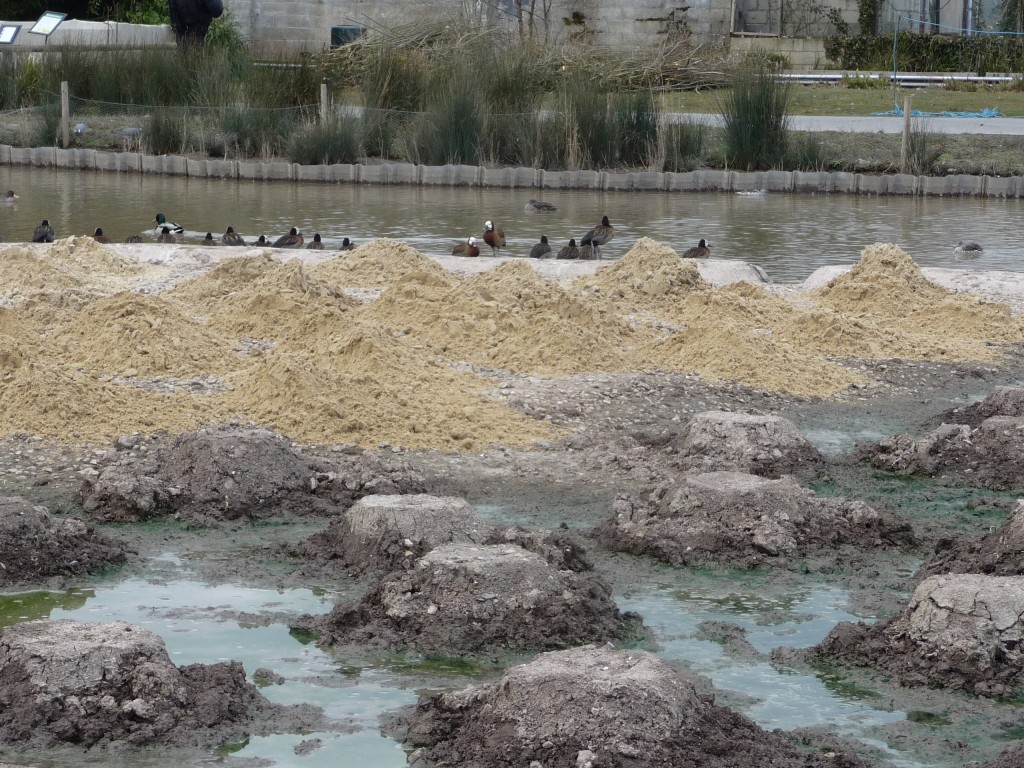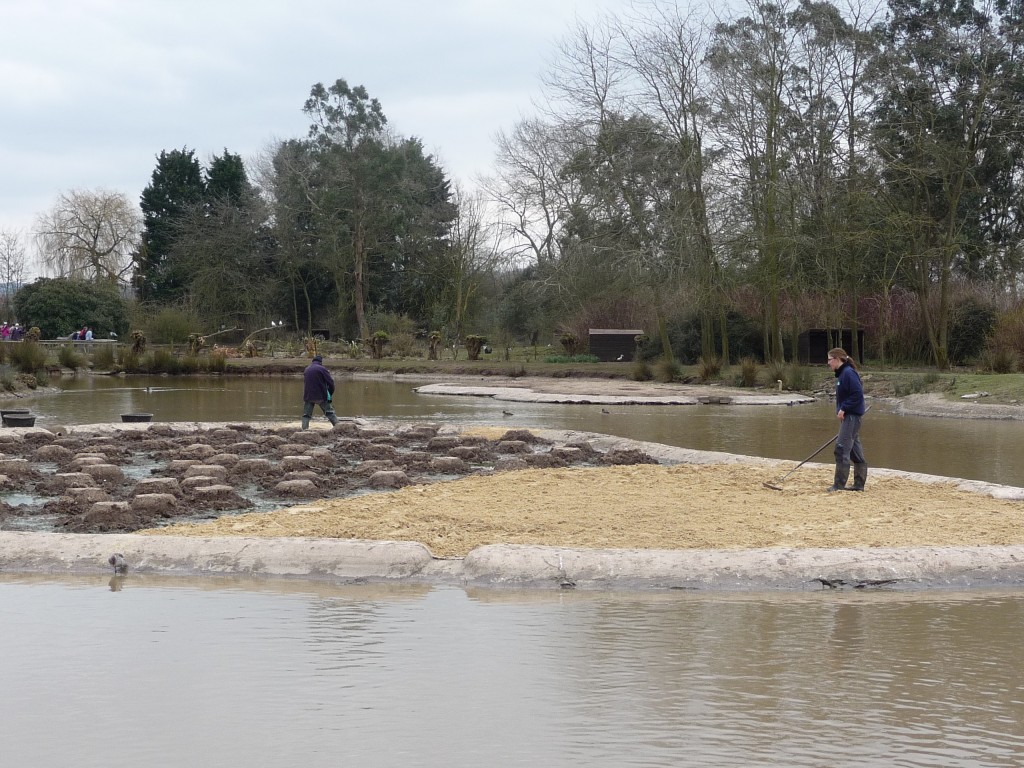Sandcastles for flamingos?
There have been some developments in Flamingo Lagoon over the past couple days; whilst the cold weather and iced-over water have kept the birds inside, the avics have been busy preparing new feeding and nesting areas for the birds. As part of this process, the avics have transferred several trailer-loads of sand to the exhibit. It might seem odd to be piling up sand in the greater flamingo enclosure at WWT Slimbridge but this new substrate is actually very useful for the birds and their young. And this is not just any old sand either, it is special free-draining, alkaline, estuary sand that will help massage and condition the flamingo's feet, and it will be a clean and hygienic environment for newly-hatched chicks to crèche on.

Flamingo feet in captivity need to be kept in good condition. Just like humans can get rough skin on their feet, so can flamingos. If the birds are kept on hard, unclean or inappropriate flooring they too can develop hard, cracked foot skin. At WWT, everything is done to ensure that the bird's feet remain as healthy as possible and given that some of the birds here are well into their 60s, this is a long-term project. You will notice that all of the inside flooring (in the bird's houses) is covered with rubberised matting to give a soft, cushioned substrate over the concrete base. This is especially important when birds need to be housed indoors in cold weather. This sand does a similar job in the outdoor enclosure; when birds are closely packed together during the breeding season, the sand gives a free-draining and clean surface for the birds (and their chicks) to stand on.
By banking up the sand around the nest mounds, the avics are able to provide raised areas for any chicks that leave their nests too early to use. These raised "sandcastles" help the chicks stay out of deep water and allow them the chance to scramble back onto their nests where they should remain until their little legs are able to keep them up and out of deeper water. Flamingo chicks naturally group together in flocks with other youngsters. These crèches can be seen in captivity and, again, by covering the area where the chicks like to gather in with estuary sand their feet will remain in good condition.
Much work has been done by aviculturists, scientists and researchers at WWT along with the BIAZA (British and Irish Association of Zoos and Aquariums) Flamingo Focus Group and the IUCN (International Union for the Conservation of Nature) Flamingo Specialist Group to ensure that flamingo feet remain healthy throughout their lives and to ensure that birds are able to produce as many of the most healthy chicks as they can. From a conservation and animal welfare viewpoint, it is important that the husbandry of captive flamingos is constantly updated and altered to be as beneficial as possible to the birds over their long lives. With three out of the six species of flamingo on the radar of conservationists, these captive birds are of prime importance. Hence this is not just making sandcastles, this is cutting-edge animal management to ensure excellent animal welfare.



